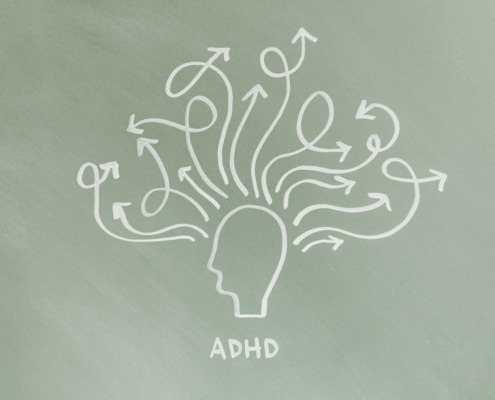 https://highesthealthchiropractic.com/wp-content/uploads/2025/05/Cortisol-Addiction-Why-Your-Family-Feels-Anxious-Tired-and-Always-On-Edge.jpg
900
1200
hhealthchiro16
https://highesthealthchiropractic.com/wp-content/uploads/2024/02/Highest-Health-Horizontal-BLACK-300x53.png
hhealthchiro162025-05-27 21:39:332025-05-27 21:39:33Cortisol Addiction: Why Your Family Feels Anxious, Tired, and Always On Edge
https://highesthealthchiropractic.com/wp-content/uploads/2025/05/Cortisol-Addiction-Why-Your-Family-Feels-Anxious-Tired-and-Always-On-Edge.jpg
900
1200
hhealthchiro16
https://highesthealthchiropractic.com/wp-content/uploads/2024/02/Highest-Health-Horizontal-BLACK-300x53.png
hhealthchiro162025-05-27 21:39:332025-05-27 21:39:33Cortisol Addiction: Why Your Family Feels Anxious, Tired, and Always On Edge https://highesthealthchiropractic.com/wp-content/uploads/2025/05/Mom-Burnout-Is-Real-Heres-How-to-Reset-Your-Body-and-Mind.jpg
900
1200
hhealthchiro16
https://highesthealthchiropractic.com/wp-content/uploads/2024/02/Highest-Health-Horizontal-BLACK-300x53.png
hhealthchiro162025-05-27 21:36:252025-05-27 21:36:25Mom Burnout Is Real: Here’s How to Reset Your Body and Mind
https://highesthealthchiropractic.com/wp-content/uploads/2025/05/Mom-Burnout-Is-Real-Heres-How-to-Reset-Your-Body-and-Mind.jpg
900
1200
hhealthchiro16
https://highesthealthchiropractic.com/wp-content/uploads/2024/02/Highest-Health-Horizontal-BLACK-300x53.png
hhealthchiro162025-05-27 21:36:252025-05-27 21:36:25Mom Burnout Is Real: Here’s How to Reset Your Body and Mind https://highesthealthchiropractic.com/wp-content/uploads/2025/05/Why-Medication-Alone-Doesnt-Work-for-ADHD-—-And-What-to-Do-Instead.jpg
900
1200
Dr. Nate DeJong
https://highesthealthchiropractic.com/wp-content/uploads/2024/02/Highest-Health-Horizontal-BLACK-300x53.png
Dr. Nate DeJong2025-05-09 18:20:372025-05-09 18:20:37Why Medication Alone Doesn’t Work for ADHD — And What to Do Instead
https://highesthealthchiropractic.com/wp-content/uploads/2025/05/Why-Medication-Alone-Doesnt-Work-for-ADHD-—-And-What-to-Do-Instead.jpg
900
1200
Dr. Nate DeJong
https://highesthealthchiropractic.com/wp-content/uploads/2024/02/Highest-Health-Horizontal-BLACK-300x53.png
Dr. Nate DeJong2025-05-09 18:20:372025-05-09 18:20:37Why Medication Alone Doesn’t Work for ADHD — And What to Do Instead https://highesthealthchiropractic.com/wp-content/uploads/2025/05/Should-You-Consider-Chiropractic-Care-for-Your-Newborn.jpg
900
1200
hhealthchiro16
https://highesthealthchiropractic.com/wp-content/uploads/2024/02/Highest-Health-Horizontal-BLACK-300x53.png
hhealthchiro162025-05-05 18:13:102025-05-05 18:13:10Should You Consider Chiropractic Care for Your Newborn?
https://highesthealthchiropractic.com/wp-content/uploads/2025/05/Should-You-Consider-Chiropractic-Care-for-Your-Newborn.jpg
900
1200
hhealthchiro16
https://highesthealthchiropractic.com/wp-content/uploads/2024/02/Highest-Health-Horizontal-BLACK-300x53.png
hhealthchiro162025-05-05 18:13:102025-05-05 18:13:10Should You Consider Chiropractic Care for Your Newborn? https://highesthealthchiropractic.com/wp-content/uploads/2025/05/Not-All-Pediatric-Chiropractors-Are-the-Same-How-to-Find-the-Right-Fit-for-Your-Child.jpg
900
1200
hhealthchiro16
https://highesthealthchiropractic.com/wp-content/uploads/2024/02/Highest-Health-Horizontal-BLACK-300x53.png
hhealthchiro162025-05-05 18:00:352025-05-05 18:00:35Not All Pediatric Chiropractors Are the Same: How to Find the Right Fit for Your Child
https://highesthealthchiropractic.com/wp-content/uploads/2025/05/Not-All-Pediatric-Chiropractors-Are-the-Same-How-to-Find-the-Right-Fit-for-Your-Child.jpg
900
1200
hhealthchiro16
https://highesthealthchiropractic.com/wp-content/uploads/2024/02/Highest-Health-Horizontal-BLACK-300x53.png
hhealthchiro162025-05-05 18:00:352025-05-05 18:00:35Not All Pediatric Chiropractors Are the Same: How to Find the Right Fit for Your Child https://highesthealthchiropractic.com/wp-content/uploads/2025/04/Why-More-Kids-Are-Getting-Sick-And-Its-Not-Just-About-Toxins.jpg
900
1200
hhealthchiro16
https://highesthealthchiropractic.com/wp-content/uploads/2024/02/Highest-Health-Horizontal-BLACK-300x53.png
hhealthchiro162025-04-22 23:09:362025-04-22 23:10:12Why More Kids Are Getting Sick (And It’s Not Just About Toxins)
https://highesthealthchiropractic.com/wp-content/uploads/2025/04/Why-More-Kids-Are-Getting-Sick-And-Its-Not-Just-About-Toxins.jpg
900
1200
hhealthchiro16
https://highesthealthchiropractic.com/wp-content/uploads/2024/02/Highest-Health-Horizontal-BLACK-300x53.png
hhealthchiro162025-04-22 23:09:362025-04-22 23:10:12Why More Kids Are Getting Sick (And It’s Not Just About Toxins) https://highesthealthchiropractic.com/wp-content/uploads/2025/04/Could-Hidden-Birth-Trauma-Be-Behind-Your-Childs-Picky-Eating-1.jpg
900
1200
hhealthchiro16
https://highesthealthchiropractic.com/wp-content/uploads/2024/02/Highest-Health-Horizontal-BLACK-300x53.png
hhealthchiro162025-04-11 19:02:352025-04-11 19:02:35Could Hidden Birth Trauma Be Behind Your Child’s Picky Eating?
https://highesthealthchiropractic.com/wp-content/uploads/2025/04/Could-Hidden-Birth-Trauma-Be-Behind-Your-Childs-Picky-Eating-1.jpg
900
1200
hhealthchiro16
https://highesthealthchiropractic.com/wp-content/uploads/2024/02/Highest-Health-Horizontal-BLACK-300x53.png
hhealthchiro162025-04-11 19:02:352025-04-11 19:02:35Could Hidden Birth Trauma Be Behind Your Child’s Picky Eating? https://highesthealthchiropractic.com/wp-content/uploads/2025/04/Can-Chiropractic-Care-Help-Alleviate-Child-Allergies-scaled.jpg
1706
2560
hhealthchiro16
https://highesthealthchiropractic.com/wp-content/uploads/2024/02/Highest-Health-Horizontal-BLACK-300x53.png
hhealthchiro162025-04-04 17:55:492025-04-04 17:55:49Can Chiropractic Care Help Alleviate Child Allergies?
https://highesthealthchiropractic.com/wp-content/uploads/2025/04/Can-Chiropractic-Care-Help-Alleviate-Child-Allergies-scaled.jpg
1706
2560
hhealthchiro16
https://highesthealthchiropractic.com/wp-content/uploads/2024/02/Highest-Health-Horizontal-BLACK-300x53.png
hhealthchiro162025-04-04 17:55:492025-04-04 17:55:49Can Chiropractic Care Help Alleviate Child Allergies? https://highesthealthchiropractic.com/wp-content/uploads/2025/04/Does-Your-Baby-Feel-Everything-You-Feel-While-Pregnant-scaled.jpg
2560
1707
hhealthchiro16
https://highesthealthchiropractic.com/wp-content/uploads/2024/02/Highest-Health-Horizontal-BLACK-300x53.png
hhealthchiro162025-04-04 17:43:422025-04-04 17:43:42Does Your Baby Feel Everything You Feel While Pregnant?
https://highesthealthchiropractic.com/wp-content/uploads/2025/04/Does-Your-Baby-Feel-Everything-You-Feel-While-Pregnant-scaled.jpg
2560
1707
hhealthchiro16
https://highesthealthchiropractic.com/wp-content/uploads/2024/02/Highest-Health-Horizontal-BLACK-300x53.png
hhealthchiro162025-04-04 17:43:422025-04-04 17:43:42Does Your Baby Feel Everything You Feel While Pregnant? https://highesthealthchiropractic.com/wp-content/uploads/2025/03/BriCowanPhotography-166-scaled-1.jpg
1707
2560
hhealthchiro16
https://highesthealthchiropractic.com/wp-content/uploads/2024/02/Highest-Health-Horizontal-BLACK-300x53.png
hhealthchiro162025-03-25 23:33:182025-03-25 23:33:18Your First Chiropractic Visit: What to Expect & How to Prepare
https://highesthealthchiropractic.com/wp-content/uploads/2025/03/BriCowanPhotography-166-scaled-1.jpg
1707
2560
hhealthchiro16
https://highesthealthchiropractic.com/wp-content/uploads/2024/02/Highest-Health-Horizontal-BLACK-300x53.png
hhealthchiro162025-03-25 23:33:182025-03-25 23:33:18Your First Chiropractic Visit: What to Expect & How to Prepare https://highesthealthchiropractic.com/wp-content/uploads/2025/03/The-3Rs-for-Bouncing-Back-from-Illness-scaled.jpg
1707
2560
hhealthchiro16
https://highesthealthchiropractic.com/wp-content/uploads/2024/02/Highest-Health-Horizontal-BLACK-300x53.png
hhealthchiro162025-03-07 07:00:192025-03-06 22:51:50The 3R's for Bouncing Back from Illness
https://highesthealthchiropractic.com/wp-content/uploads/2025/03/The-3Rs-for-Bouncing-Back-from-Illness-scaled.jpg
1707
2560
hhealthchiro16
https://highesthealthchiropractic.com/wp-content/uploads/2024/02/Highest-Health-Horizontal-BLACK-300x53.png
hhealthchiro162025-03-07 07:00:192025-03-06 22:51:50The 3R's for Bouncing Back from Illness https://highesthealthchiropractic.com/wp-content/uploads/2025/03/Stimming-and-Autism-Can-Chiropractic-Care-Help-scaled.jpg
1920
2560
hhealthchiro16
https://highesthealthchiropractic.com/wp-content/uploads/2024/02/Highest-Health-Horizontal-BLACK-300x53.png
hhealthchiro162025-03-02 00:34:532025-03-02 00:34:53Stimming and Autism: Can Chiropractic Care Help?
https://highesthealthchiropractic.com/wp-content/uploads/2025/03/Stimming-and-Autism-Can-Chiropractic-Care-Help-scaled.jpg
1920
2560
hhealthchiro16
https://highesthealthchiropractic.com/wp-content/uploads/2024/02/Highest-Health-Horizontal-BLACK-300x53.png
hhealthchiro162025-03-02 00:34:532025-03-02 00:34:53Stimming and Autism: Can Chiropractic Care Help?Recent Posts
- Cortisol Addiction: Why Your Family Feels Anxious, Tired, and Always On Edge
- Mom Burnout Is Real: Here’s How to Reset Your Body and Mind
- Why Medication Alone Doesn’t Work for ADHD — And What to Do Instead
- Should You Consider Chiropractic Care for Your Newborn?
- Not All Pediatric Chiropractors Are the Same: How to Find the Right Fit for Your Child





Recent Comments